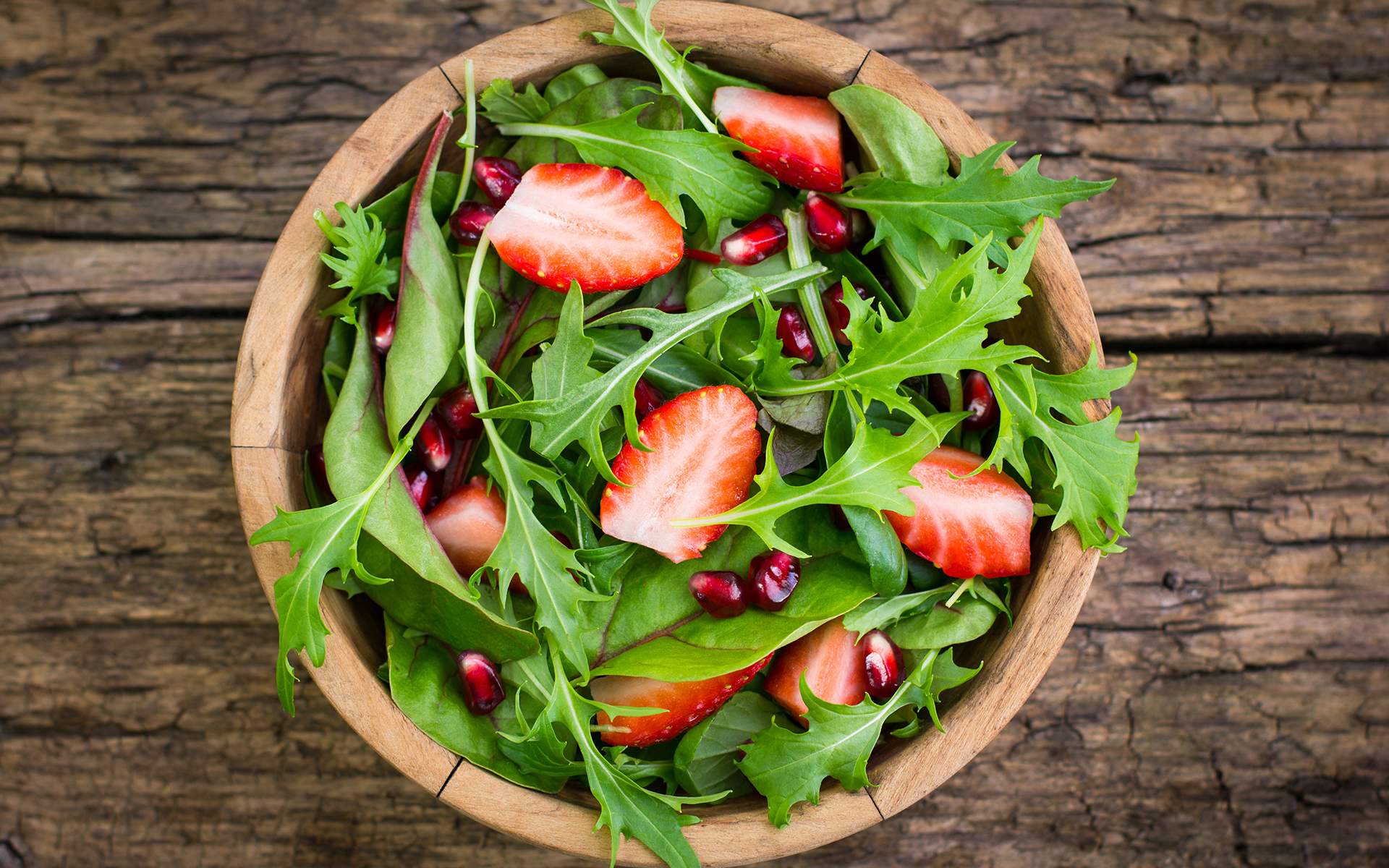In the world of leafy greens, arugula and iceberg lettuce are complete opposites.
Arugula is peppery, assertive, and wild; iceberg is crunchy and polite. Arugula is rich in vitamin C and potassium, while iceberg has little nutritional value, containing mostly water. Despite this, iceberg is the most popular lettuce in the United States, while arugula was little known in North America until recently.
Which, aside from painting a rather puritan picture of the American palate, is just a damn shame. Arugula—or salad rocket, as it’s known in much of the English-speaking world—is one of the meanest, tastiest greens there is.
Its history is suggestive. As early as the first century CE, arugula was documented as an aphrodisiac. Virgil wrote of its libido-inducing proper- ties, and its leaves and seeds were used in lusty concoc- tions rumored to spice up life in the bedroom.
Since then, arugula has come to stand for less stimulating virtues. In an unexpected turn, it has recently been evoked as a symbol for elitism—a perception at odds with its racy personality.
Arugula, it seems, is widely considered an ingredient reserved for highfalutin foodies. When presidential hopeful Barack Obama uttered the word to a handful of Iowa farmers in 2008, it attracted enough attention to make the cover of Newsweek.
For many, Obama’s arugula moment was a ripe symbol of his failure to connect with the plumbers of this world. But it seems even more remarkable, in hindsight, that so much meaning was invested in— and so much handwringing su ered over—a salad green. Usually anxiety of that magnitude is reserved for the kind of rocket we send into space.
Imagine the story retold with romaine or iceberg. It would seem absurd. Yet arugula has no more claim to cultural or culinary loftiness than those more familiar greens. But it does possess more character than any lettuce out there, so it shouldn’t come as a surprise that we would imbue it with such power.
I love the stuff because it makes salad burn. Truly good arugula bites back—not at all like the limp, sterile, prewashed lettuce you might come across in the produce section. So treat it with a firm hand. Puree it into an intense, garlicky pesto. Wilt it over a bubbling-hot pizza. Or serve it in a hearty salad with a potent combination of Dijon mustard, vinegar, shallots, and chives.
At its best, arugula is cruel, intense, nose-burningly spicy, and heartbreakingly good. It doesn’t taste like refinement or courtesy or class. It tastes like wildness. It tastes like rockets.
Arugula Pesto with Walnuts, Lime, and Coriander
- Sea salt and pepper
- 1⁄2 cup packed coriander leaves
- 2⁄3 cup olive oil
- Squeeze of lime juice
- 1 garlic clove, peeled and halved
- 1⁄2 lime zest, nely grated
- 1⁄2 tsp ground coriander
- 1⁄3 cup walnut kernels
- 1⁄2 cup Parmesan
- cheese, finely grated
- 2 cups packed arugula
In the bowl of a food processor, combine a pinch of sea salt, pepper, lime zest, garlic, ground coriander, walnuts, Parmesan, arugula, and coriander leaves. Work into a ne paste.
While the machine is running, pour the olive oil gradually until you reach your preferred pesto texture.
Transfer to a clean jar and stir in a squeeze of lime juice. Can be enjoyed with pasta or bread or used as a pizza base.
Keep in the refrigerator for up to a week or freeze.






